Freeze frame: the making of Paul Cocksedge’s chilled furniture collection

‘I’ve documented Paul’s work for years but this was the first time that we’ve collaborated on this scale,’ says Mark Cocksedge about photographing his brother’s design processes – in this case the development of the monumental ’Freeze’ collection. ’For me, it was about four, five months of photographing, going back and forth from London to Liverpool. I had to basically be on call for five months [laughing].’ Pictured: the ’Freeze Multi Ring Table’ being treated with liquid nitrogen at a foundry in Liverpool
Paul Cocksedge's continuing quest to articulate simplicity through the use of materials reached a new, Wallpaper* Design Awards-worthy apex with 'Freeze', a monumental collection of metal furniture constructed by freezing the different components and then having them expand into place as they returned to normal temperature. The collection was unveiled at Friedman Benda gallery in New York last year, along with a captivating catalogue filled with photographs of Cocksedge’s intriguing process by the designer’s brother, photographer Mark Cocksedge.
‘I very much enjoyed this process because there are a lot of times when things are made that you see them once they’re delivered to the studio, or there’s this rapid prototype experience,’ says Paul. ‘This was really about being around materials – touching metal and really appreciating the mass, colour and texture of these materials coming together in this environment.’
In honour of Cocksedge’s recent win, we present a special edit of images from the catalogue with anecdotes from the brothers. 'In a way, all of that work is the hard bit and now we’re producing different variations – longer versions, wider ones, different colours. It’s all still happening,' Paul concludes.
'London is great in so many wonderful ways,' says Paul. 'In terms of the kind of making that we needed to do, the factories aren’t in London so my brother and I had to go on a road trip. We did a tour of some of the northern cities to try and connect with heavy industry because we were pushing limits, weights, sizes and machines.' Pictured: 'Freeze' bench, 2015
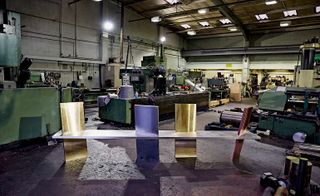
'What started off as being scheduled for just one day would turn into sometimes a week, or week and a half, of staying up there. I would just stay to capture all these wonderful moments that we see in the catalogue,' Mark continues. Pictured: the top of the 'Multi Circle Table' gets a lift

'There are a lot of people working in factories, so there's a balance that you’ve got to get right. You’re stepping into an environment that’s very different, a totally different world in a way,' recalls Paul, pictured here examining the table. 'There’s noise and chemicals and banter – there’s a lot of things that can go wrong in a place like that, so there was a respect level that we had to quickly get our heads around. These guys are doing jobs that are incredibly skilled, so that balance was very interesting'
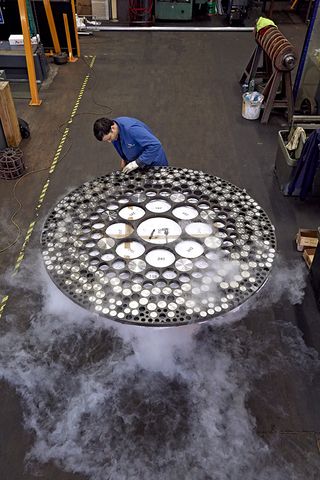

A detail of the 'Multi Circle Table' in the making
Paul continues, 'There is an element of two worlds coming together. These guys aren’t necessarily used to doing this kind of decorative, fine art sculptural work. However, they are very much in tune with beauty in a different way; they’re very sensitive to certain things, like the way you have to handle metal, the treatments and the technologies that go into working with the kind of things we were doing'
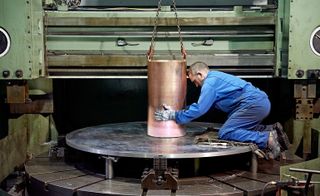
'I think at one point because [the workers] had an idea of me being an "artist" or a "designer" coming into a factory, they were initially a bit wary,' Paul says. 'But because I took my jacket off and I worked, I think I got some kind of respect. Maybe not as much as in my head, but I became part of it'
Wallpaper* Newsletter
Receive our daily digest of inspiration, escapism and design stories from around the world direct to your inbox
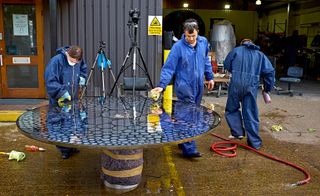
'We were lucky on both sides – we had a factory that was equipped and then we had the team there, who [had] a very different understanding because they’d never built furniture like we were doing. But they had a really great sensibility towards making – there was that passion,' Paul adds
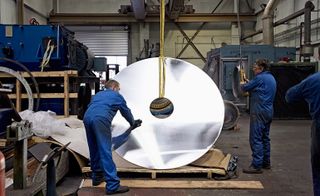
Mark says, 'The factory usually works on motors, gears and parts of turbine engines. There was a lot of engineering machinery used for making part for boats and cruise liners – definitely not art pieces, you couldn’t have gotten further away’

’This is one of my favourite photos,’ says Mark. ’You can really see them going, "what have we just created?". It’s just a chair, but it’s also quite fascinating. The picture does sum up the entire project in a way’
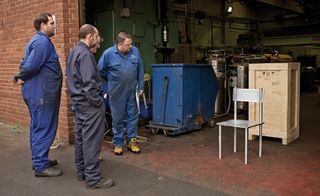
INFORMATION
For more information, visit Paul Cocksedge Studio’s website
Photography: Mark Cocksedge
Pei-Ru Keh is a former US Editor at Wallpaper*. Born and raised in Singapore, she has been a New Yorker since 2013. Pei-Ru held various titles at Wallpaper* between 2007 and 2023. She reports on design, tech, art, architecture, fashion, beauty and lifestyle happenings in the United States, both in print and digitally. Pei-Ru took a key role in championing diversity and representation within Wallpaper's content pillars, actively seeking out stories that reflect a wide range of perspectives. She lives in Brooklyn with her husband and two children, and is currently learning how to drive.
-
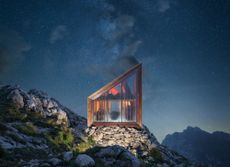 The visual feast of the Sony World Photography Awards 2024 is revealed
The visual feast of the Sony World Photography Awards 2024 is revealedThe Sony World Photography Awards 2024 winners have been revealed – we celebrate the Architecture & Design category’s visual artists
By Ellie Stathaki Published
-
 Don’t Move, Improve 2024: London’s bold, bright and boutique home renovations
Don’t Move, Improve 2024: London’s bold, bright and boutique home renovationsDon’t Move, Improve 2024 reveals its shortlist, with 16 home designs competing for the top spot, to be announced in May
By Ellie Stathaki Published
-
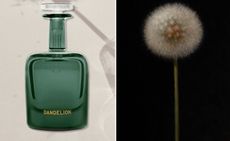 Perfumer H has bottled the scent of dandelions blowing in the wind
Perfumer H has bottled the scent of dandelions blowing in the windPerfumer H has debuted a new fragrance for spring, called Dandelion. Lyn Harris tells Wallpaper* about the process of its creation
By Hannah Tindle Published
-
 Brooklyn furniture studio Stillmade unveils its first collaborative design series
Brooklyn furniture studio Stillmade unveils its first collaborative design seriesStillmade brings to life the designs of four New Yorkers – Pat Kim, Danny Kaplan, Michele Quan and Mignogna Studio
By Pei-Ru Keh Published
-
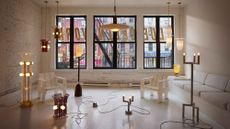 Blue Green Works's lighting champions a new aesthetic in American design
Blue Green Works's lighting champions a new aesthetic in American designManhattan-based design studio Blue Green Works fuses sensuality and masculinity to create mellow, mood-enhancing lighting with visual impact
By Pei-Ru Keh Published
-
 Blue Green Works introduces alluring new lighting collection
Blue Green Works introduces alluring new lighting collectionInspired by iconography, American design studio Blue Green Works introduces five new lighting ranges
By Rosa Bertoli Published
-
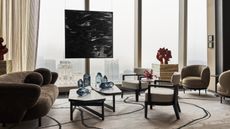 First look inside Centurion New York by Yabu Pushelberg
First look inside Centurion New York by Yabu PushelbergCenturion New York is an expansive new space for American Express’ ‘black card’ members. Its interior designers Yabu Pushelberg give us a tour
By Tilly Macalister-Smith Published
-
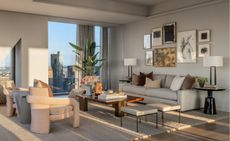 Exclusive peek at artfully curated home in Jean Nouvel’s 53 West 53
Exclusive peek at artfully curated home in Jean Nouvel’s 53 West 53RR Interiors' latest furnishing project – 61A at 53 West 53 – highlights art, architecture and city views inside Jean Nouvel's monumental New York skyscraper in Midtown Manhattan
By Martha Elliott Last updated
-
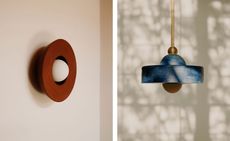 Sculptural ceramic lamps from Brooklyn’s In Common With and Danny Kaplan
Sculptural ceramic lamps from Brooklyn’s In Common With and Danny Kaplan‘Terra’, a new collection of ceramic lamps featuring tactile glazes, puts Brooklyn studio In Common With and ceramicist Danny Kaplan in the spotlight
By Pei-Ru Keh Last updated
-
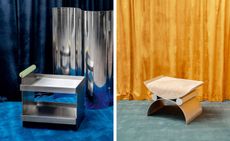 Sight Unseen launches furniture line with Bestcase
Sight Unseen launches furniture line with BestcaseEditorial platform Sight Unseen worked with sheet metal specialist Bestcase to launch a collection of 1970s-inspired furniture in collaboration with Home Studios, Studio Anansi and Thévoz-Choquet
By Pei-Ru Keh Last updated
-
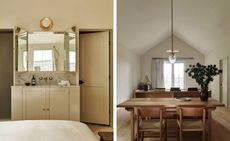 Roll & Hill and Post Company's lighting designs in Inness are inspired by Georgian bell jars
Roll & Hill and Post Company's lighting designs in Inness are inspired by Georgian bell jarsBrooklyn-based studio Post Company created a new lighting collection for Roll & Hill, inspired by bell jar lanterns and conceived for country refuge Inness
By Pei-Ru Keh Last updated